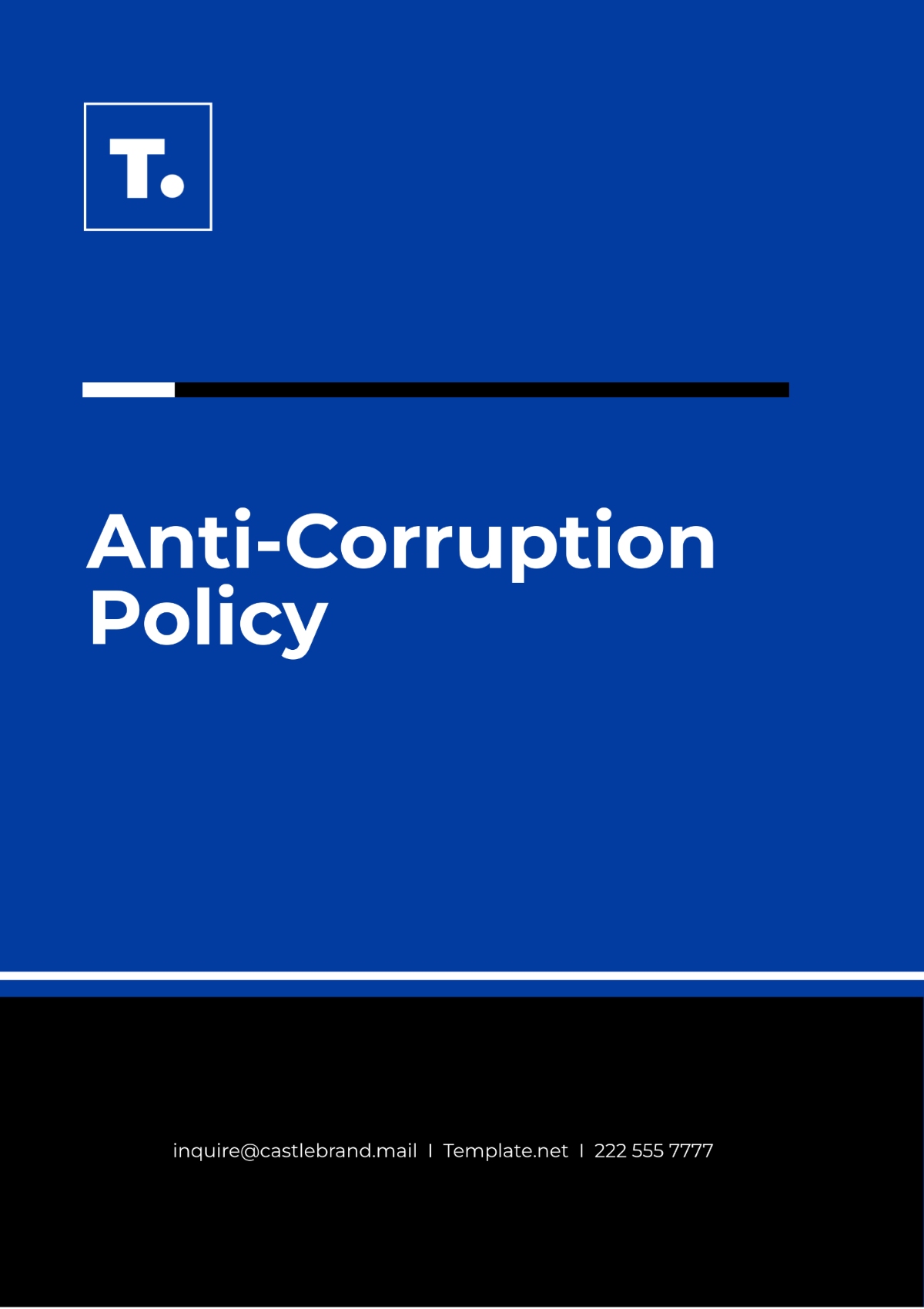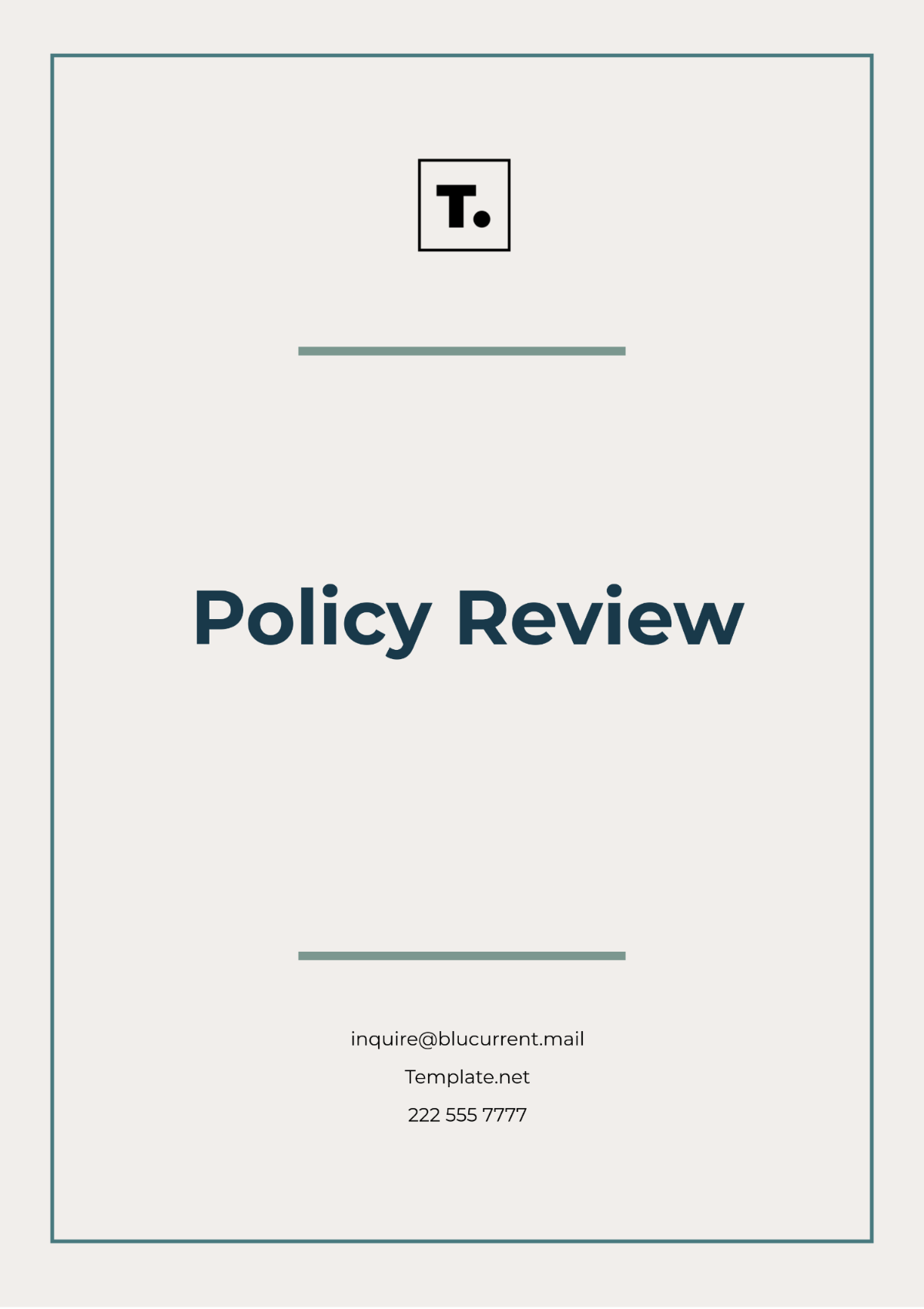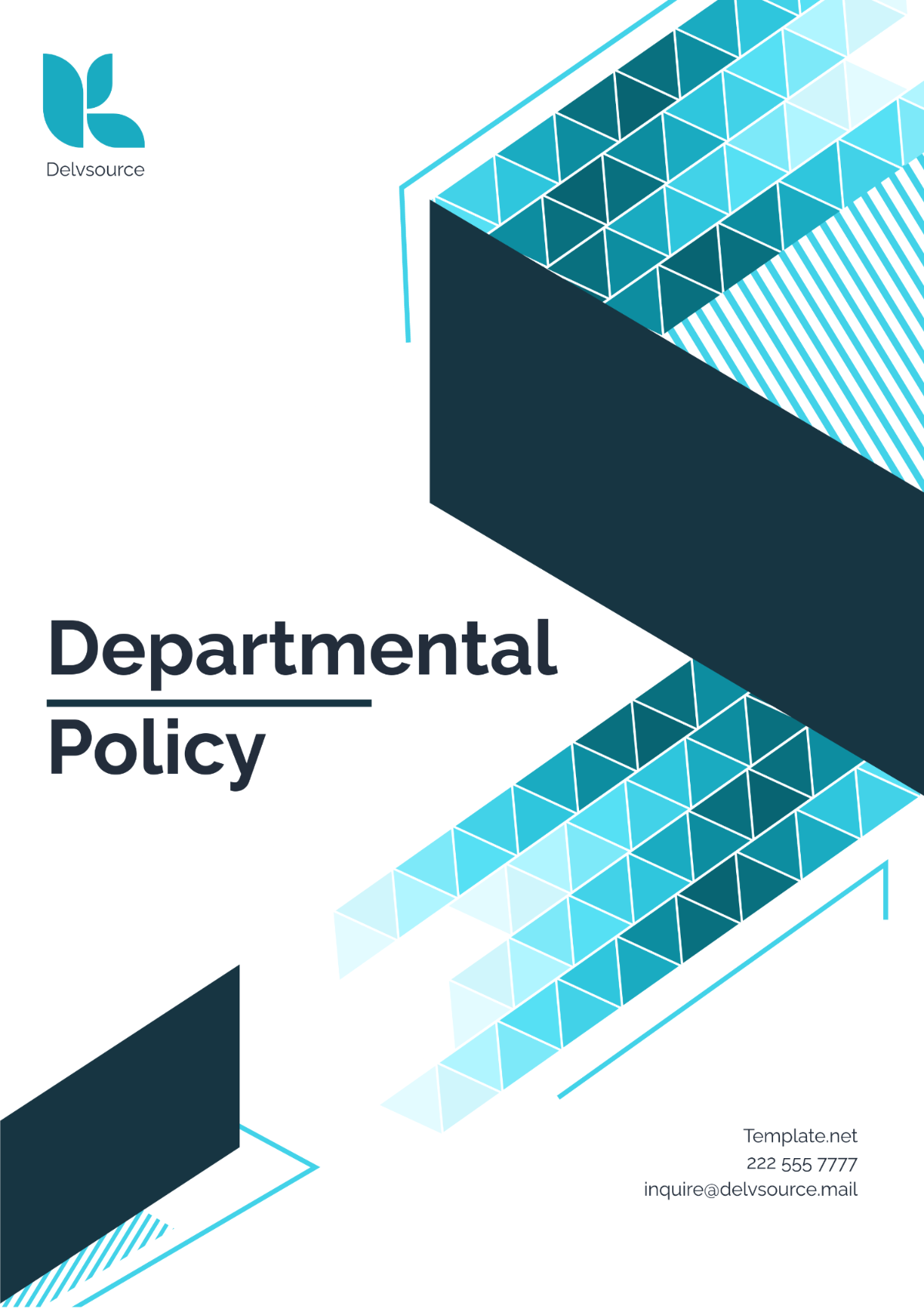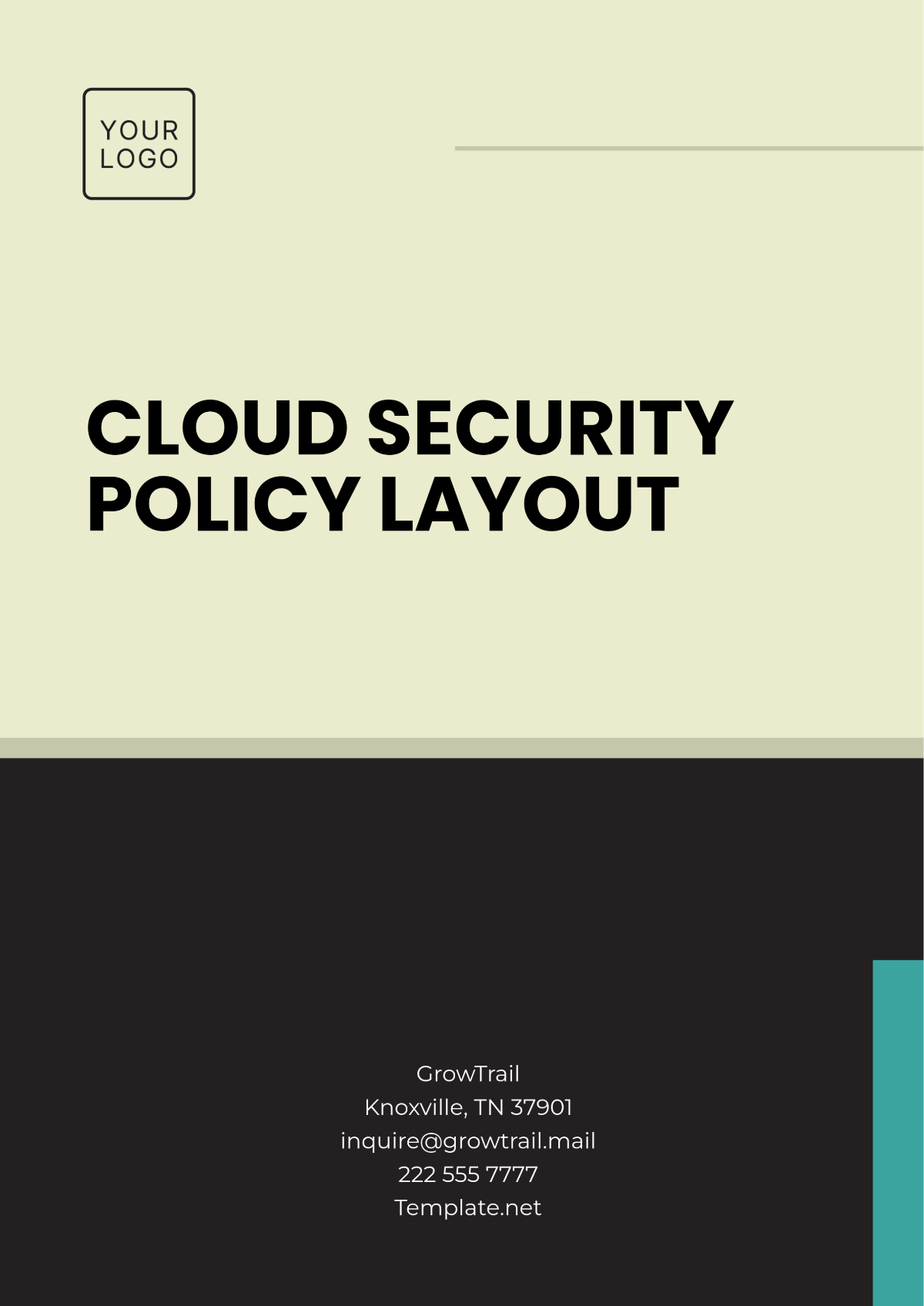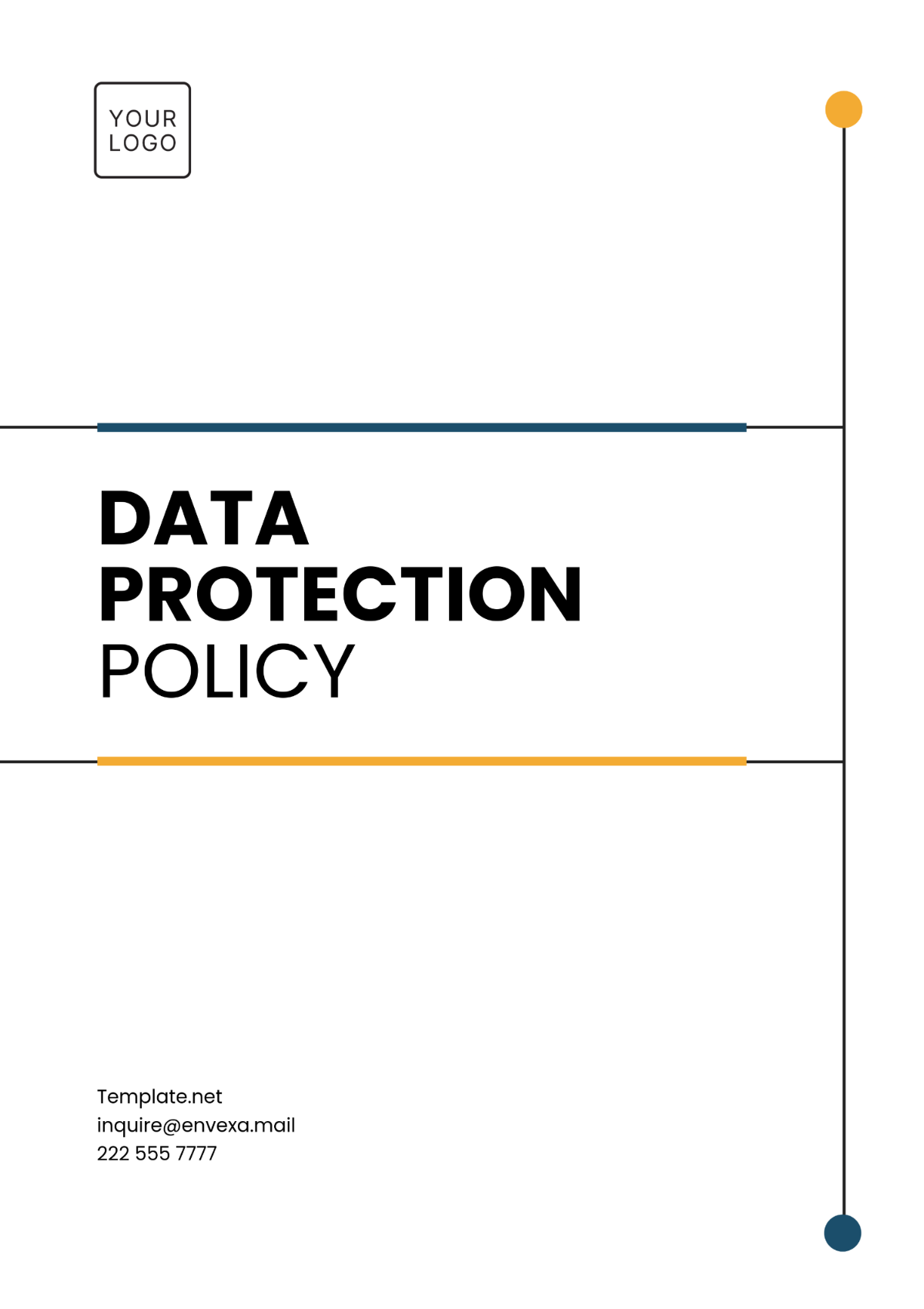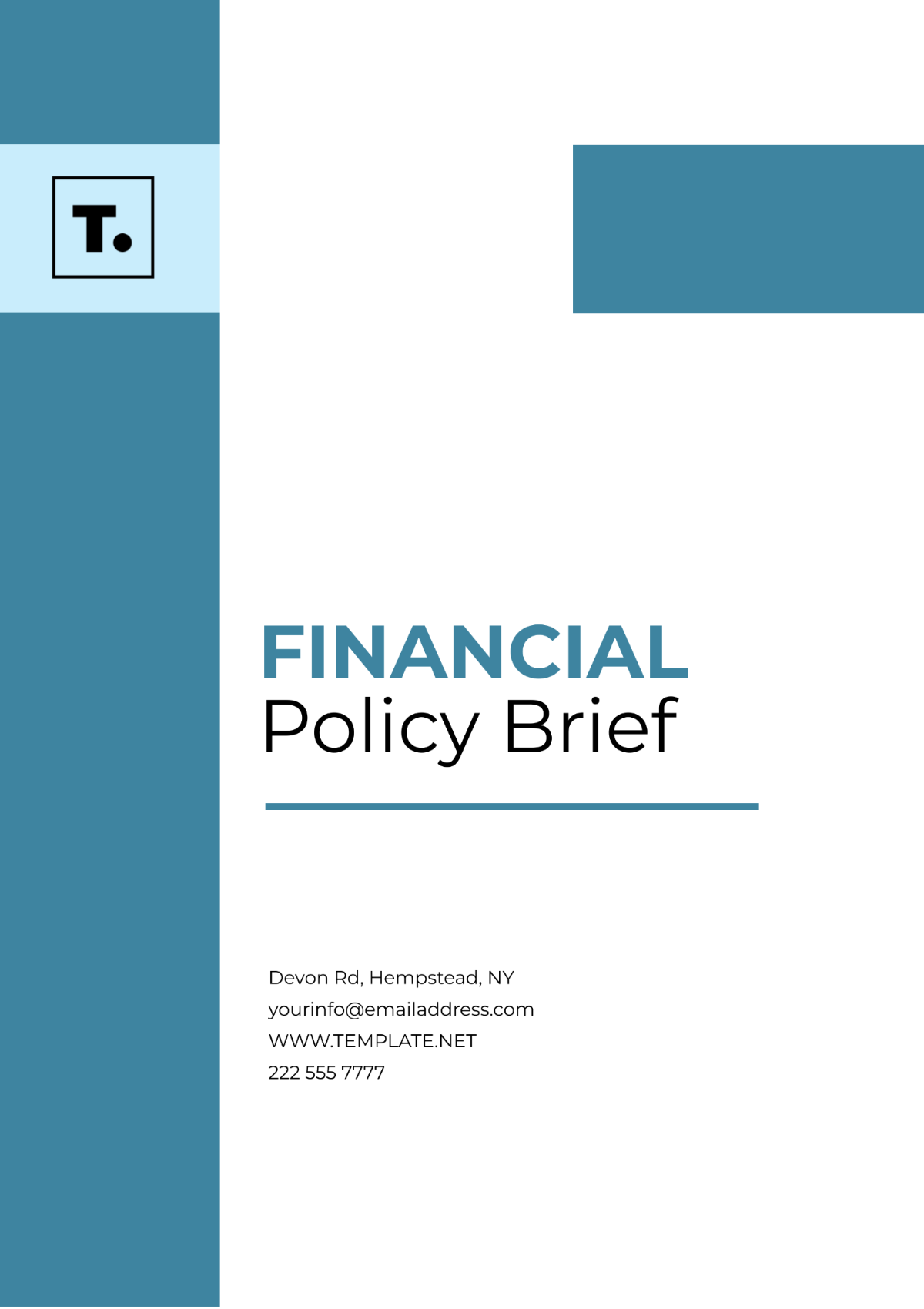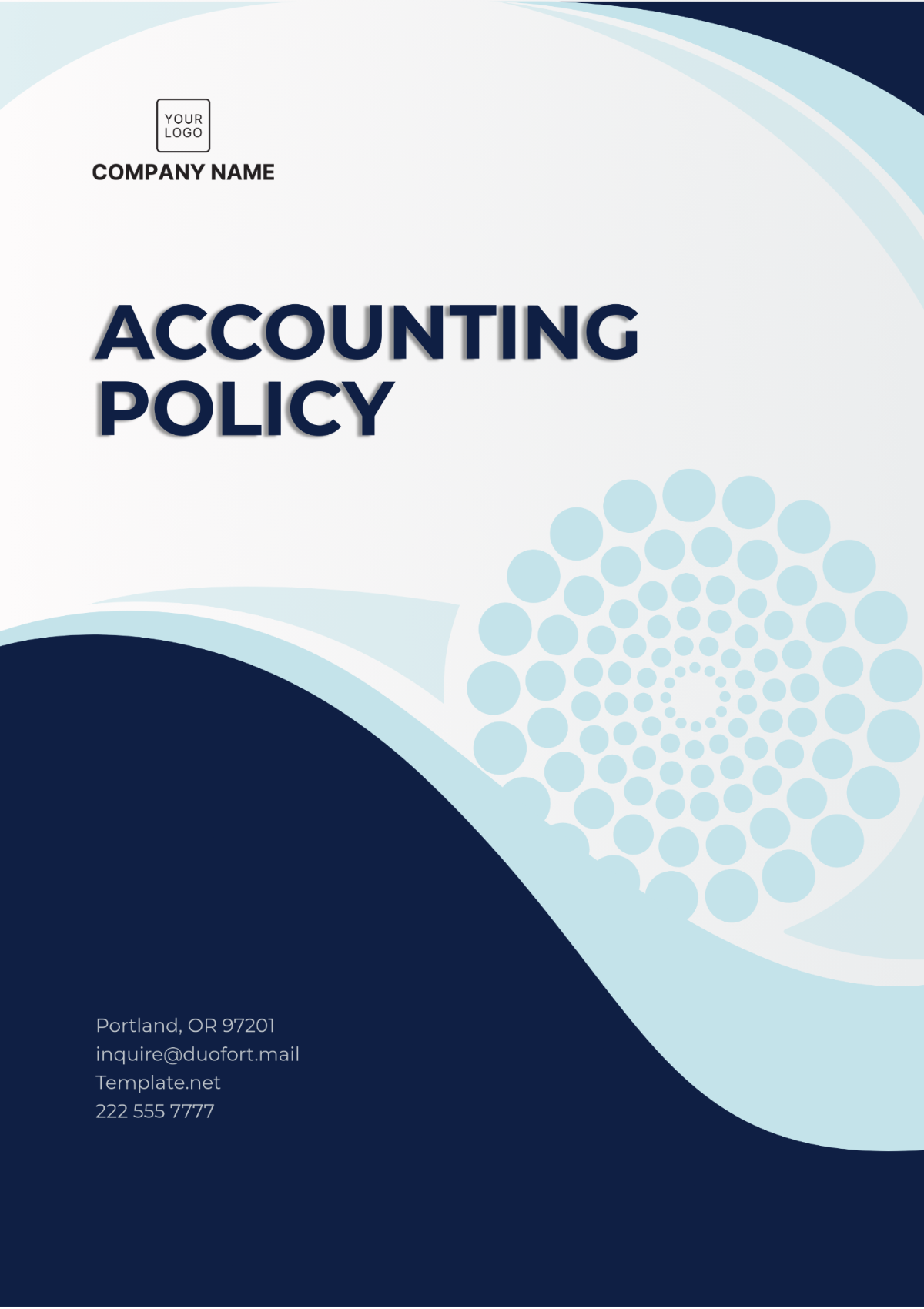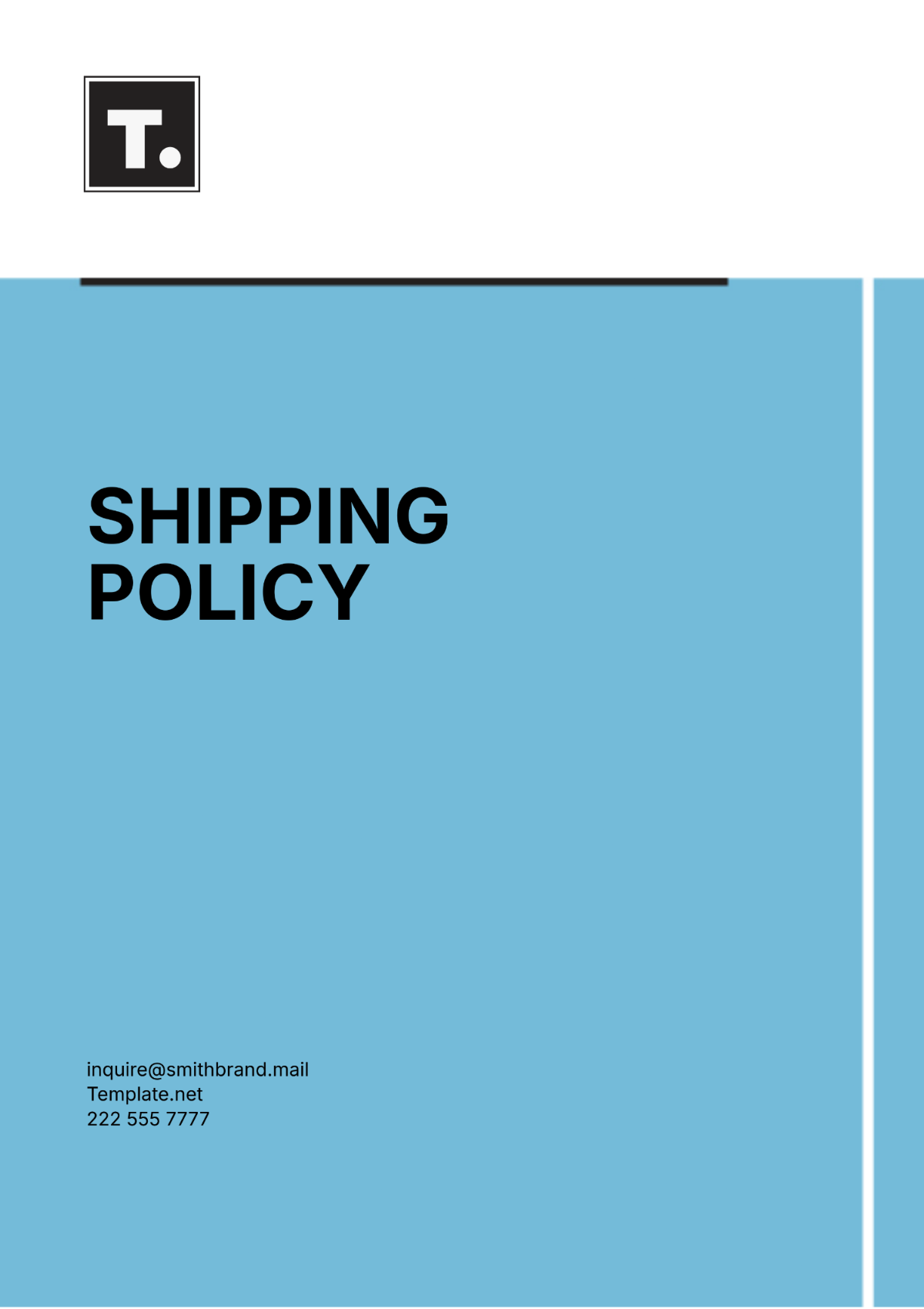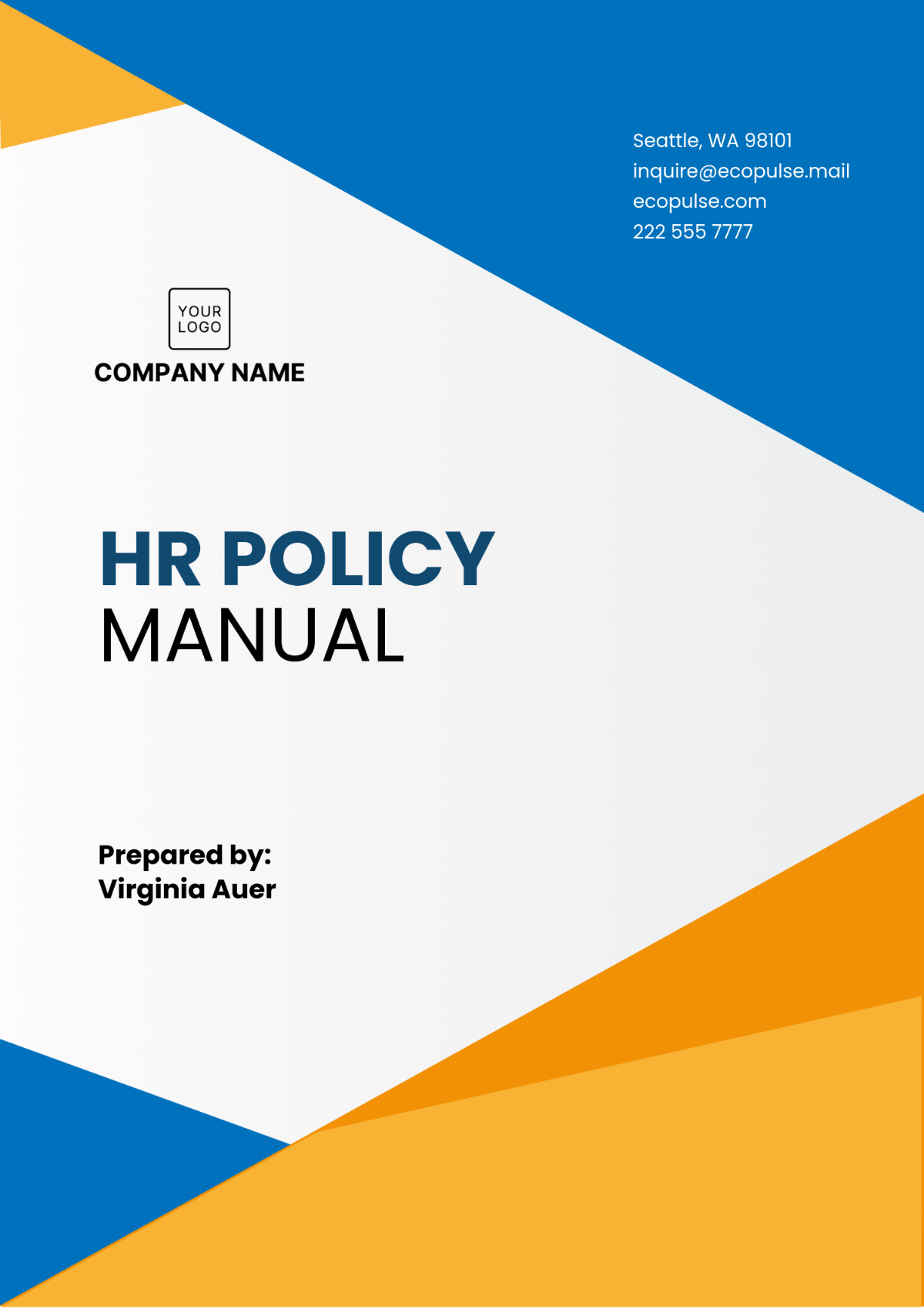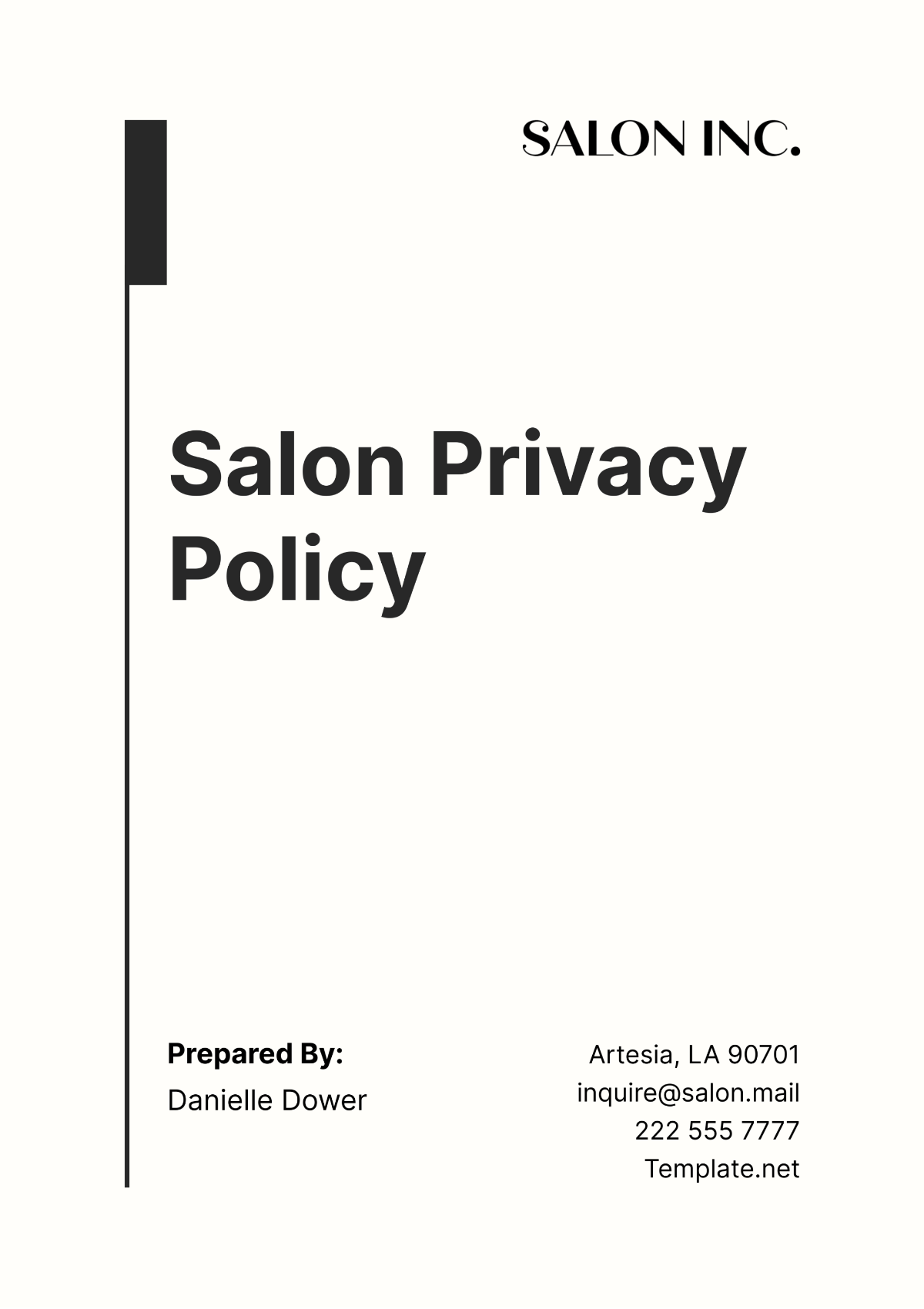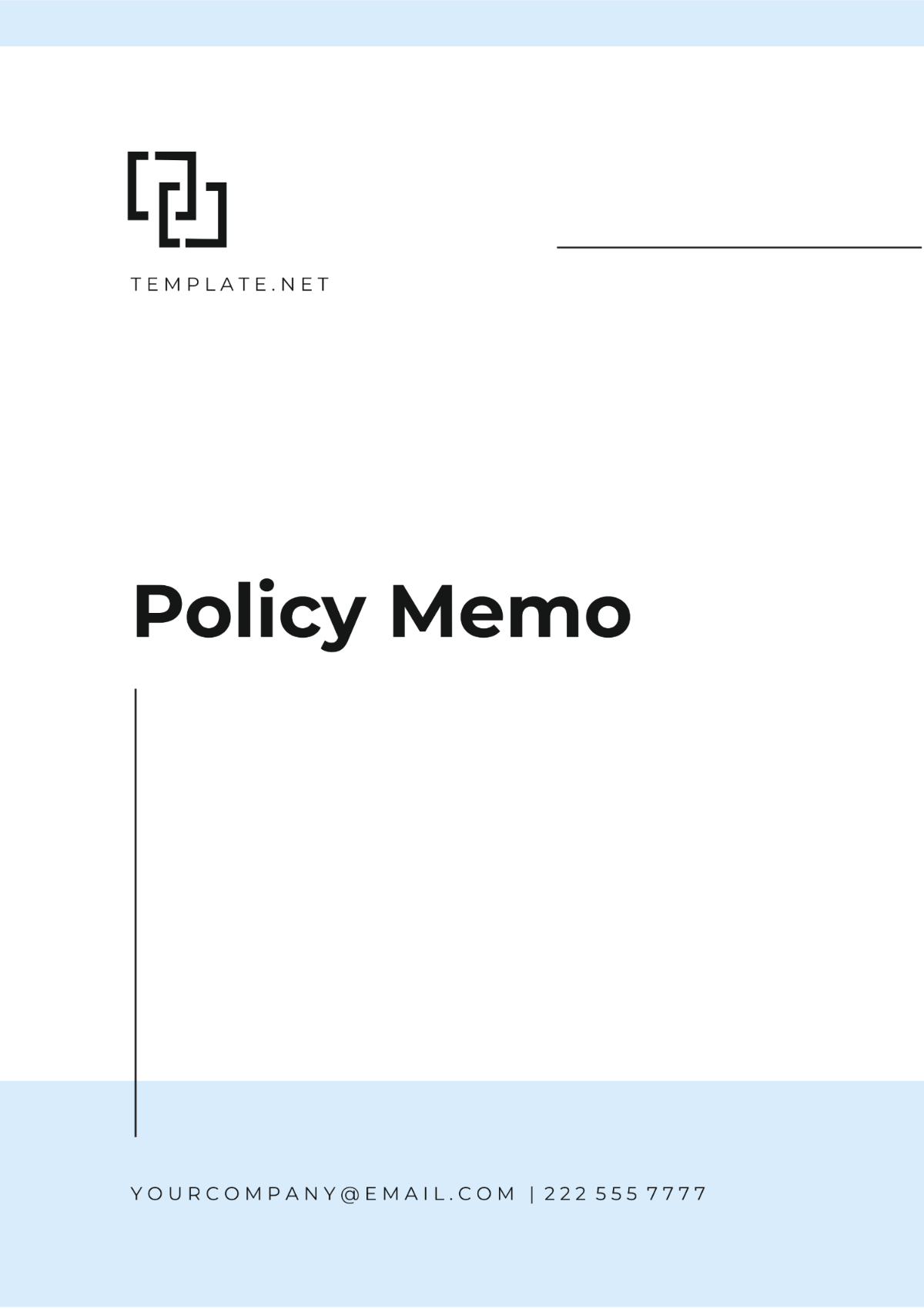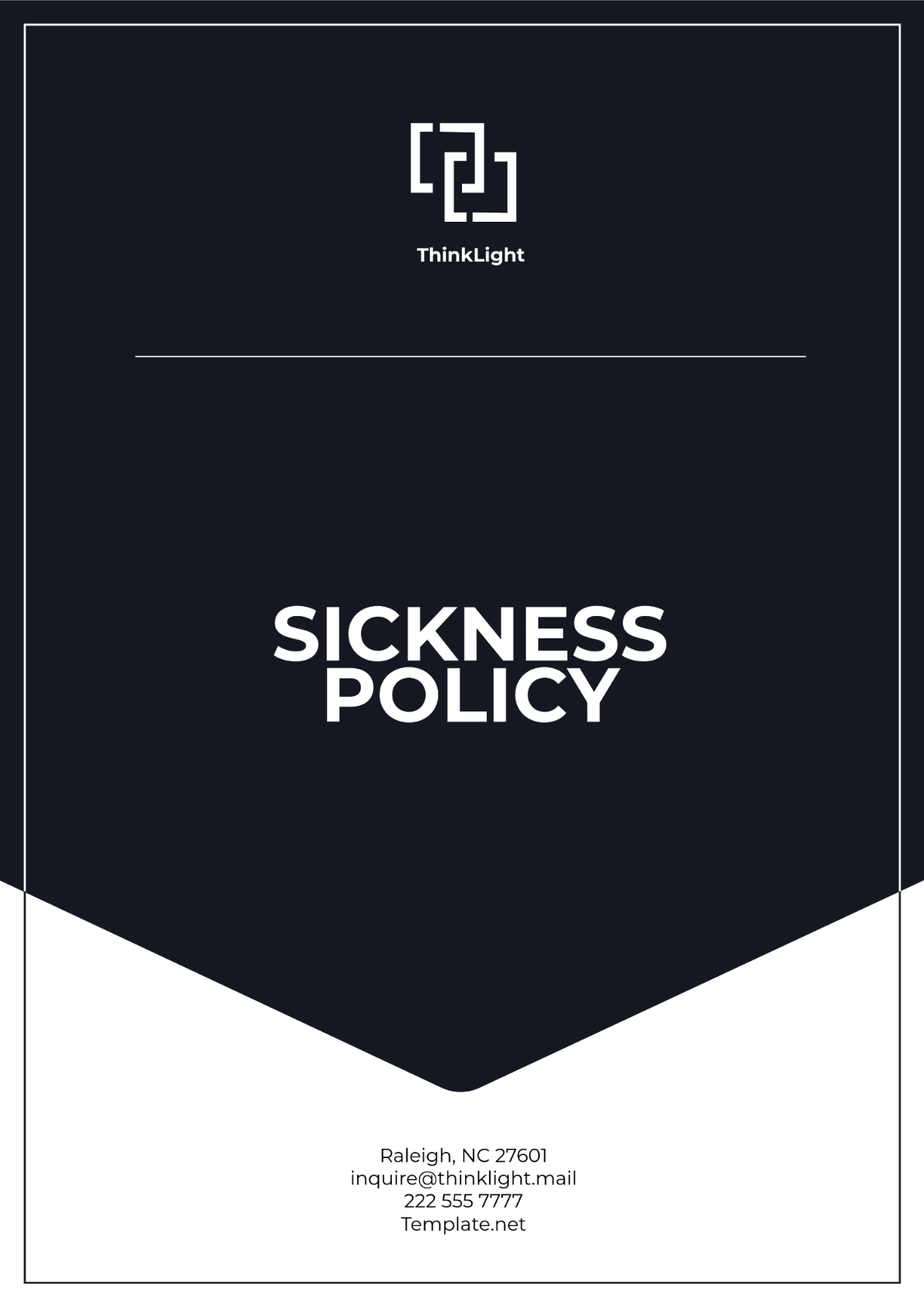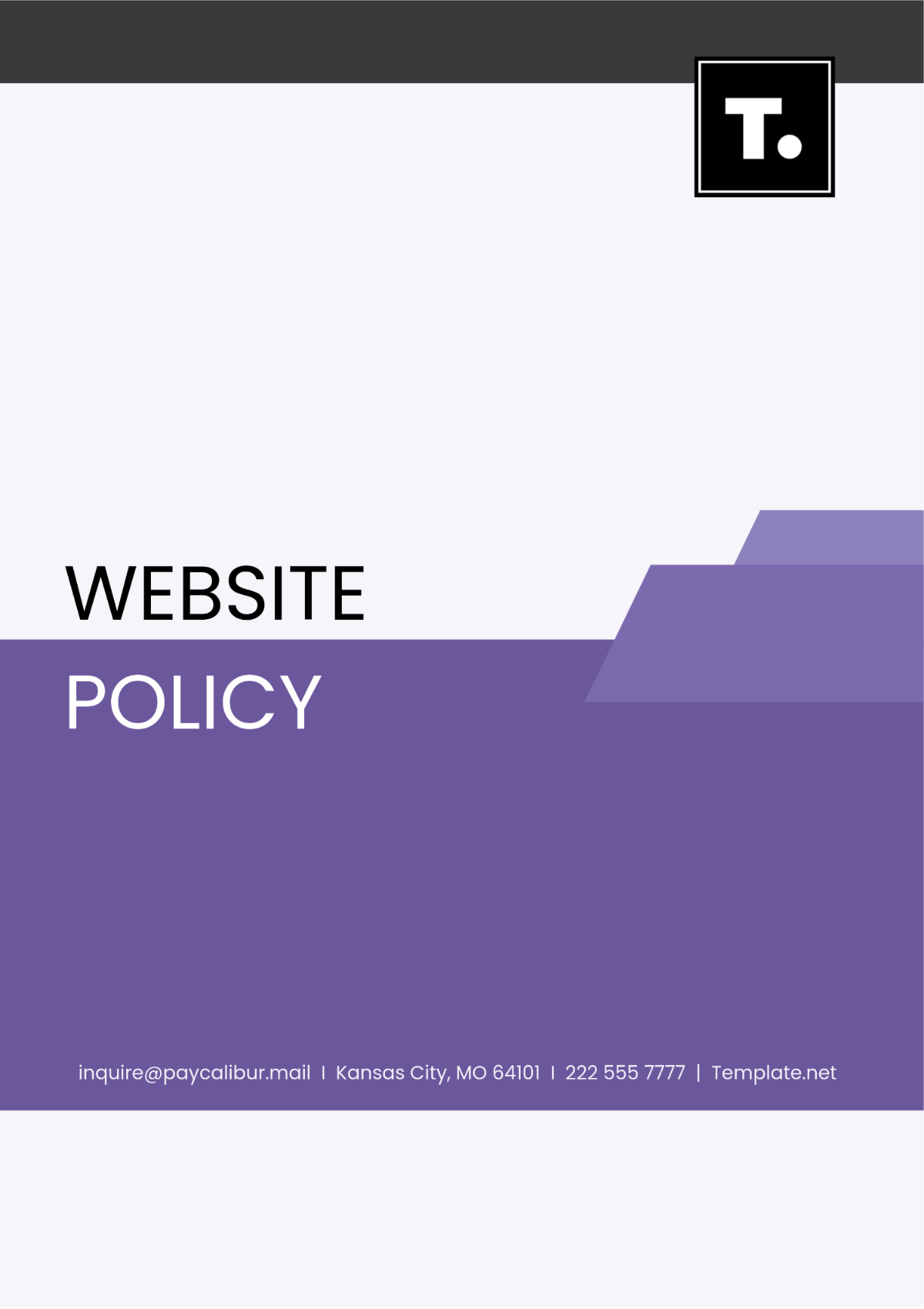Free Architecture Financial Policy
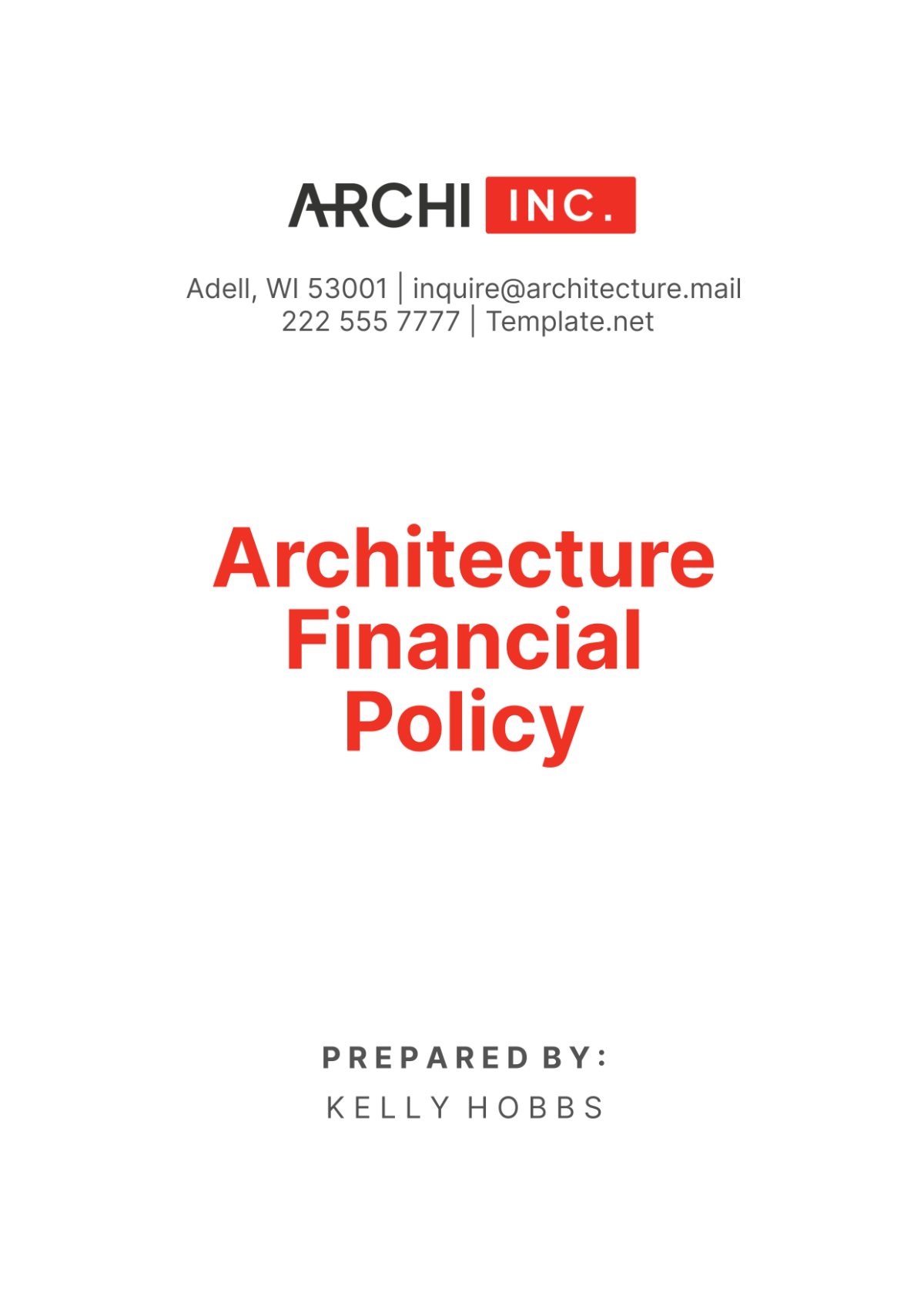
- 100% Customizable, free editor
- Access 1 Million+ Templates, photo’s & graphics
- Download or share as a template
- Click and replace photos, graphics, text, backgrounds
- Resize, crop, AI write & more
- Access advanced editor
Explore the Architecture Financial Policy Template, exclusively at Template.net! Manage your firm's financial operations with clarity and consistency. This comprehensive template provides guidelines for financial practices, ensuring compliance and transparency. Easily customizable with our AI editor tool, adapt it to suit your specific requirements. Simplify financial management and maintain integrity with Template.net!
You may also like
- HR Policy
- Restaurant Policy
- Company Policy
- Accounting Policies and Procedures
- Website Policy
- Privacy Policy
- Safety Policy
- School Policy
- IT and Software Policy
- Law Firm Policy
- Construction Policy
- Interior Design Policy
- Travel Agency Policy
- Education Academic Policy
- Security Policy
- Real Estate Policy
- Expense Policy
- Software Policy
1. Purpose
The purpose of this Architecture Financial Policy is to establish comprehensive guidelines and principles for managing financial aspects within the architecture industry. Effective financial management is crucial for the success and sustainability of any organization, and this policy is designed to ensure that [Your Company Name] adheres to the highest standards of financial integrity and operational efficiency.
1.1 Objectives
The primary objectives of this policy are to:
Promote Financial Discipline: Ensure that all financial activities are conducted with the highest level of discipline, transparency, and accountability.
Facilitate Financial Planning: Provide a structured framework for short-term and long-term financial planning, helping the organization anticipate future financial needs and challenges.
Enhance Resource Allocation: Optimize the allocation of financial resources to various projects and departments, ensuring that funds are used effectively and efficiently.
Support Decision-Making: Provide accurate and timely financial information to support strategic decision-making by senior management and other stakeholders.
Ensure Compliance: Ensure compliance with relevant laws, regulations, and industry standards, minimizing legal and financial risks.
Promote Sustainability: Support the sustainable growth of the organization by ensuring that financial practices are aligned with long-term business goals and environmental considerations.
1.2 Importance of Financial Management
Effective financial management is integral to the success of architectural projects, which often involve significant investments and complex financial transactions. By implementing this policy, [Your Company Name] aims to:
Improve Financial Performance: Achieve better financial outcomes through careful planning, monitoring, and control of financial activities.
Minimize Financial Risks: Identify and mitigate financial risks associated with architectural projects, including cost overruns, cash flow issues, and financial fraud.
Build Stakeholder Confidence: Build trust and confidence among clients, investors, and other stakeholders by demonstrating a commitment to sound financial management practices.
2. Scope
This policy applies to all financial activities related to architectural projects conducted by [Your Company Name]. It encompasses a wide range of financial functions, including budgeting, accounting, financial reporting, and fiscal management, and is designed to be comprehensive and inclusive.
2.1 Applicability
The policy is applicable to:
Employees: All employees of [Your Company Name] who are involved in financial activities, including project managers, accountants, financial analysts, and senior management.
Contractors: External contractors and consultants who provide financial services or support to the organization.
Stakeholders: All stakeholders involved in the financial aspects of our architectural projects, including clients, investors, and regulatory bodies.
2.2 Financial Activities Covered
The scope of this policy includes, but is not limited to, the following financial activities:
Budgeting: The process of preparing, reviewing, and approving annual and project-specific budgets to forecast and allocate financial resources.
Accounting: The recording, classification, and reporting of financial transactions in accordance with generally accepted accounting principles (GAAP).
Financial Reporting: The preparation and dissemination of monthly and annual financial reports to track financial performance and support decision-making.
Fiscal Management: The implementation of cost control measures, revenue management strategies, and other practices to ensure the efficient use of financial resources.
Compliance: Adherence to relevant laws, regulations, and industry standards to ensure legal and financial compliance.
2.3 Responsibilities
The successful implementation of this policy requires the active participation and cooperation of all individuals and departments involved in financial activities. Key responsibilities include:
Senior Management: Overseeing the overall financial management of the organization and ensuring compliance with this policy.
Financial Department: Managing day-to-day financial operations, preparing financial reports, and conducting audits to ensure adherence to the policy.
Project Managers: Ensuring that project-specific financial activities comply with the policy and that budgets are managed effectively.
Employees and Contractors: Adhering to the guidelines and principles outlined in this policy and seeking guidance when necessary.
2.4 Compliance and Enforcement
Compliance with this policy is mandatory for all applicable parties. The financial department is responsible for monitoring adherence to the policy and reporting any deviations or issues to senior management. Non-compliance may result in disciplinary action, up to and including termination of employment or contract.
3. Financial Planning and Budgeting
Effective financial planning and budgeting are essential for the successful execution of architectural projects. This chapter outlines the processes for preparing annual and project-specific budgets, ensuring that all financial activities are anticipated and managed efficiently.
3.1 Annual Budget Preparation
Each fiscal year, an annual budget will be prepared to forecast the expected financial activities. The budget must be reviewed and approved by the senior management team before implementation.
3.2 Project Budgeting
For each architectural project, a detailed project budget must be prepared, outlining expected costs, revenue, and cash flow. The project budget must be approved by the project manager and the financial department.
Table 1: Project Budget Template
Item | Estimated Cost ($) | Actual Cost ($) | Variance ($) |
|---|---|---|---|
Design Phase | 50,000 | 45,000 | -5,000 |
Construction Phase | 200,000 | 210,000 | +10,000 |
Materials | 100,000 | 95,000 | -5,000 |
Labor | 150,000 | 160,000 | +10,000 |
Miscellaneous Expenses | 20,000 | 18,000 | -2,000 |
Total | 520,000 | 528,000 | +8,000 |
4. Accounting Policies
Adhering to robust accounting policies ensures the integrity and transparency of financial records. This chapter details the standards and procedures for recording and maintaining financial transactions within the organization.
4.1 Accounting Standards
All financial transactions shall be recorded following generally accepted accounting principles (GAAP) to ensure accuracy and consistency in financial reporting.
4.2 Record Keeping
All financial records must be maintained accurately and stored securely. Records should be retained for a minimum of seven years in compliance with legal and regulatory requirements.
5. Financial Reporting
Regular financial reporting is crucial for monitoring the financial health of the organization and making informed decisions. This chapter covers the preparation and review processes for monthly and annual financial reports.
5.1 Monthly Financial Reports
Monthly financial reports shall be prepared to track financial performance. These reports should be reviewed by the senior management team and used for informed decision-making.
5.2 Annual Financial Statements
Annual financial statements shall be prepared at the end of each fiscal year. These statements must be audited by an independent auditor to ensure accuracy and compliance with accounting standards.
6. Fiscal Management
Effective fiscal management practices are vital for controlling costs and maximizing revenue. This chapter outlines strategies and measures to ensure efficient use of resources and achievement of financial targets.
6.1 Cost Control
All projects and departments must implement effective cost control measures to minimize expenses and optimize resource usage without compromising quality.
6.2 Revenue Management
Revenue generation activities must be monitored regularly to ensure that revenue targets are met. Strategies should be employed to improve revenue collection and manage receivables efficiently.
Table 2: Revenue Management Plan
Revenue Source | Target ($) | Actual ($) | Variance ($) |
|---|---|---|---|
Project Fees | 1,000,000 | 950,000 | -50,000 |
Consultation Fees | 200,000 | 210,000 | +10,000 |
Licensing Fees | 50,000 | 55,000 | +5,000 |
Miscellaneous Income | 30,000 | 25,000 | -5,000 |
Total | 1,280,000 | 1,240,000 | -40,000 |
7. Compliance and Monitoring
Ensuring compliance with the Architecture Financial Policy is paramount to maintaining financial integrity and operational efficiency. This chapter delineates the mechanisms for monitoring adherence to the policy and the procedures for addressing any deviations.
7.1 Compliance Responsibilities
Financial Department: The primary responsibility for monitoring compliance with this policy lies with the financial department. They must ensure that all financial transactions, budgeting processes, and reporting activities adhere to the established guidelines and principles.
Project Managers: Project managers are accountable for ensuring that project-specific financial activities comply with the policy. They must oversee the preparation and execution of project budgets, maintain accurate financial records, and report any discrepancies.
All Employees and Stakeholders: Every employee, contractor, and stakeholder involved in financial activities must adhere to this policy. They are required to familiarize themselves with the policy and seek guidance when necessary.
7.2 Monitoring Procedures
Regular Audits: The financial department shall conduct regular internal audits to review compliance with the policy. These audits will evaluate the accuracy of financial records, adherence to budgeting guidelines, and the effectiveness of cost control measures.
Monthly Reviews: Monthly financial reports will be reviewed by the senior management team to ensure ongoing compliance with the policy. Any significant variances or issues identified during these reviews must be addressed promptly.
Annual Reviews: An annual review of financial activities will be conducted to assess overall compliance with the policy. This review will include an analysis of the annual financial statements and an evaluation of the effectiveness of the financial management practices.
7.3 Corrective Actions
Identifying Issues: Any deviations from the policy or financial irregularities identified during audits or reviews must be documented and reported to senior management.
Implementing Solutions: Corrective actions must be implemented to address identified issues. This may include revising procedures, providing additional training to staff, or enhancing internal controls.
Follow-up Reviews: Follow-up reviews will be conducted to ensure that corrective actions have been effective and that compliance has been restored.
8. Policy Review
Regular review and updating of the Architecture Financial Policy are essential to ensure its continued relevance and effectiveness. This chapter outlines the process for reviewing and amending the policy.
8.1 Review Frequency
Annual Review: The policy shall be reviewed annually to ensure it remains aligned with current financial practices, regulatory requirements, and organizational goals. The annual review will take place at the end of each fiscal year, with any necessary amendments implemented at the start of the following year.
8.2 Review Process
Initiation: The review process will be initiated by the financial department, which will coordinate with relevant stakeholders to gather input and feedback on the policy.
Assessment: The financial department will assess the policy's effectiveness by analyzing compliance reports, audit findings, and feedback from employees and stakeholders.
Amendments: Based on the assessment, the financial department will draft proposed amendments to the policy. These amendments will be reviewed and approved by senior management before implementation.
Communication: Any changes to the policy will be communicated to all employees, contractors, and stakeholders. Training sessions or informational meetings may be conducted to ensure understanding and compliance with the updated policy.
8.3 Continuous Improvement
Feedback Mechanism: A feedback mechanism will be established to allow employees and stakeholders to provide ongoing input on the policy. This feedback will be used to identify areas for improvement and to make timely adjustments to the policy.
Benchmarking: The financial department will benchmark the policy against industry standards and best practices to ensure that it remains comprehensive and effective.
Adaptability: The policy will be designed to be adaptable to changes in the financial landscape, including new regulations, technological advancements, and organizational growth. Flexibility in the policy will enable the organization to respond proactively to evolving financial challenges and opportunities.
Effective Date: January 1, 2050
Review Date: January 1, 2051
For further information or inquiries, please contact:
[Your Company Email]
[Your Company Number]



